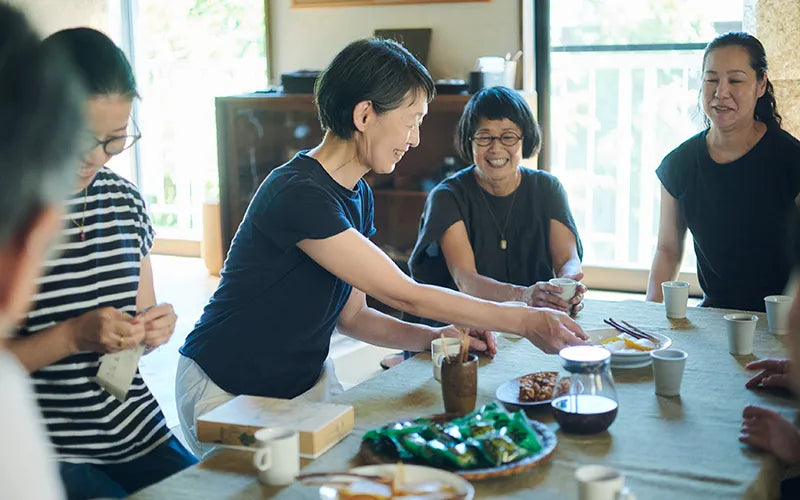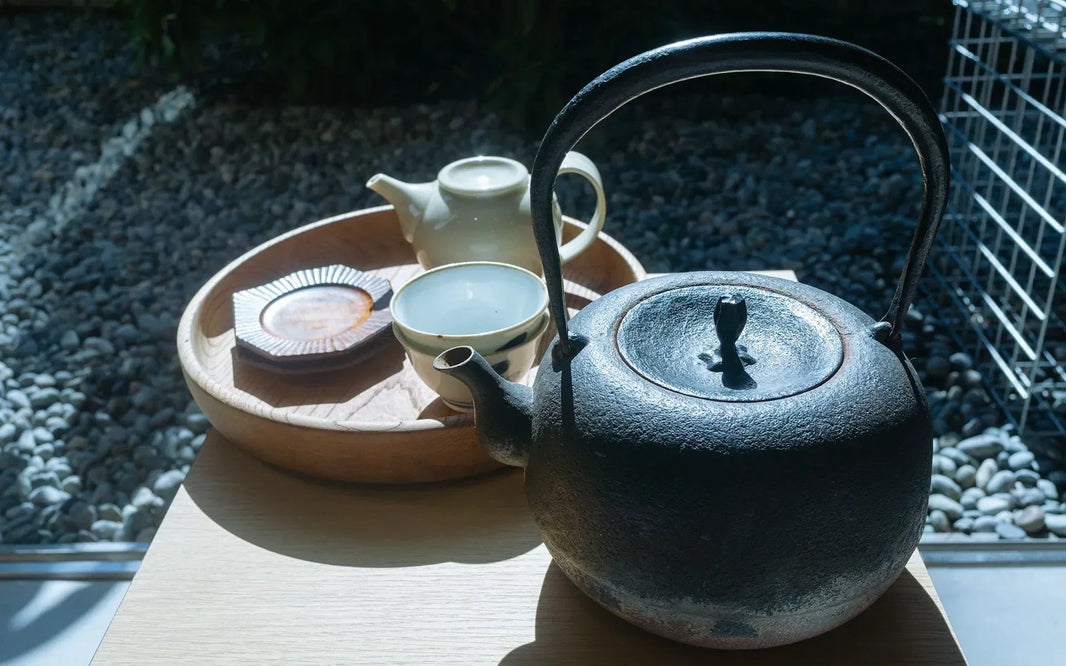A Long-Seller Born from the Desire to "Preserve"
"It absorbs water well, lets air through, and dries quickly. What if we made dishcloths from mosquito net fabric?"
Nakagawa's long-selling product, the "Hana Fukin," was born from this single moment of inspiration.
Mosquito nets, once a familiar sight of Japanese summers, were formerly a major industry in our hometown of Nara. However, demand continued to decline with changing times.

"We don't want to lose this wonderful local specialty. Couldn't we put it to some use?"
With these thoughts in mind, when we picked up the fabric again, we found that mosquito net fabric without starch was incredibly soft and pleasant to the touch. The loose weave, originally designed to keep insects out while letting air through, possessed excellent water absorption and quick-drying properties.

"This might be perfect for dishcloths used in daily life."
Thus began our journey to regenerate Nara's specialty mosquito net fabric into "dishcloths." To make the most of the loose-weave fabric, we made them about four times larger than typical dishcloths. When folded, they absorb water exceptionally well; when spread out to dry, they dry quickly. For color, we dyed them in seasonal flower hues to add beauty to daily kitchen work.

In 1995, Nakagawa's "Hana Fukin" was born—a beautiful and functional regeneration of Nara's specialty mosquito net fabric.
Many Hands Supporting a Single Cloth
The Hana Fukin's appeal lies not only in being thin yet durable, but also in developing a softer texture the more it's used. While appearing simple in construction, its production process is anything but straightforward.

For instance, in the "weaving" process, if the thread tension is even slightly loose, the weave becomes distorted; if pulled too tight, the threads break immediately. Craftspeople constantly move between looms, adjusting thread conditions while monitoring the material, humidity, weather, and machine characteristics.

The "dyeing, sizing, and width-setting" processes determine the cloth's texture and color. In harsh factory conditions reaching 40°C due to heat treatment of the fabric, advanced techniques create the soft texture and delicate colors. The final crucial step, "sewing," requires hand-operating sewing machines for each piece, as the loose-weave fabric must be sewn in double layers.

Through the support of many hands, the "durable Hana Fukin that becomes softer with use" is completed.
2008: A Delightful Surprise for "Just a Dishcloth"
In 2008, something wonderful happened to the Hana Fukin, which had been a popular product since its launch. Among the 3,000 annual entries to the Good Design Awards from across the country, our Hana Fukin won the Gold Award (Minister of Economy, Trade and Industry Award), equivalent to the Best 15.
In a field where most winning products featured cutting-edge technology like robotics, the recognition of a daily-use dishcloth was extraordinary.
Just a dishcloth, yet so much more. The item we created with the sole desire to preserve Nara's traditional craftsmanship had found acceptance in modern times.
From Mosquito Net Fabric to "Kaya-ori"

More than 20 years after its launch, the "Hana Fukin" has become synonymous with Nakagawa. Today, to further expand the possibilities of mosquito net fabric, we have named this "traditional loose-weave thin textile from Nara" <Kaya-ori> and begun new creative endeavors.
For example, we've developed swaddling clothes that utilize the softness and moisture absorption properties, blouses and stoles that can be worn comfortably in summer, and vinyl bags that combine the beauty of the weave with added functionality through PVC processing. By developing items beyond dishcloths that make use of <Kaya-ori>'s characteristics, we hope more people will discover the charm of this textile.







